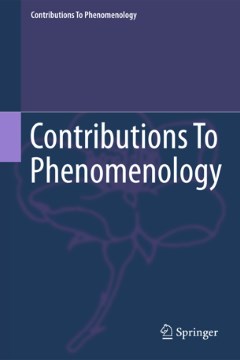Repository | Book | Chapter

(2017) Empathy, sociality, and personhood, Dordrecht, Springer.
This chapter has two related aims. The first one is to bring to the fore the potential of a "multi-layered' account of empathy. The second one is to clarify the role of imagination in empathy, with particular attention to the process of "centrally imagining' what the other is experiencing. The argument is based on the comparison between Peter Goldie's and Edith Stein's accounts of empathy. As to the first point, I will show that Goldie's rather sophisticated concept of empathy already presupposes basic layers of understanding, which are more thoroughly clarified in Stein's analyses. As to the second point, I will argue that empathy, in its different layers, significantly relies on imagination, and more precisely on "central imagining'. In order to clarify the meaning of "central imagining', without incurring into either conceptual and phenomenological paradoxes or ethically dubious statements, a closer consideration of how the imagining subject is and can be involved in interpersonal perspectival shift is required.
Publication details
DOI: 10.1007/978-3-319-71096-9_5
Full citation:
Summa, M. (2017)., Empathy and anti-empathy: which are the problems?, in E. Magrì & D. Moran (eds.), Empathy, sociality, and personhood, Dordrecht, Springer, pp. 87-105.
This document is unfortunately not available for download at the moment.


